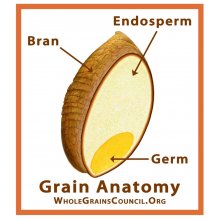Introduction
Wheat is one of the oldest domesticated food crops and is the third most produced crop worldwide. Wheat provides 20% of the daily food calories and protein and thus takes a central place in human nutrition. After the harvest, wheat kernels are typically milled into white flour or into wholemeal. The main proteins of wheat (i.e. the gluten proteins) possess the unique ability to develop a viscoelastic network upon hydration and mixing, which explains why wheat is the golden standard for a wide range of foods (bread, cookies, pasta, …). The major wheat species grown worldwide is Triticum aestivum L., which is also known as “common” or “bread” wheat. The second most grown wheat species is Triticum durum, which is adapted to the Mediterranean climate. Triticum durum wheats are used for making pasta and are often referred to as “pasta wheat” or “durum wheat”. (Shewry 2015, Giraldo 2019)
Key facts about the crop
The cultivation of wheat started around 10,000 years ago in the Middle East and is now grown mainly in temperate zones around the world. However, wheat is grown on every continent except for Antarctica. Wheat is grown primarily for human consumption and is in most cases milled into flour. White flour consists of the inner part of the wheat kernel (the endosperm), while in wholemeal the grain as a whole is present. Wholemeal contains more dietary fibre, vitamins, minerals and bioactive compounds than white flour which makes wholemeal a better choice from a health perspective. The most important application of wheat in biotechnological applications in Europe is its use as raw material for the production of bread and baked goods. Significant amounts are also used for the production of pasta products and breakfast cereals. Wheat gluten proteins are unique because they can form a viscoelastic dough with the ability to retains gas, which allows the production of an airy bread crumb. Wheat dough is fermented during (sourdough) bread production, where yeast (and lactic acid bacteria) are responsible for gas production but also affect the flavor and the structure of bread. Furthermore, wheat can also be fermented to make beer or fermented wheat porridges.
Why we are working on this crop in HealthFerm
Cereals are the major source of energy, carbohydrates (and more importantly dietary fibre) and protein in the human diet (Poutanen, et al. 2022 Nutr Rev). Among cereals, wheat is the most produced and processed crop in Europe (FAO. 2019. FAOSTAT Statistical Database). In addition, it has been shown that fermentation can positively affect the taste and texture (Katina, 2006) and even health-related properties (Poutanen, 2009) of wheat-based products. Furthermore, fermentation could represent a new way to expand the applicability of wheat proteins in emerging plant based foods such as dairy alternatives and meat analogues. Finally, wheat is used by many citizens to make their own sourdoughs, which can serve as a source of microbial diversity for the project. The above illustrates why wheat is a highly relevant study object of the HealthFerm project.
Curiosity about the crop
- Wheat needs 110 to 130 day to grow from planting to harvest
- Wheat is the most produced crop in Europe
- Did you know that Turkish people consume the highest amount of bread worldwide, with an average of 200 kg per person per year?
- Did you know that wheat cultivation is even older than the first cities in the world, the Great Pyramid of Giza and the first solar calendar ever created?
- Did you know that pharaohs in ancient Egypt were buried with wheat?





